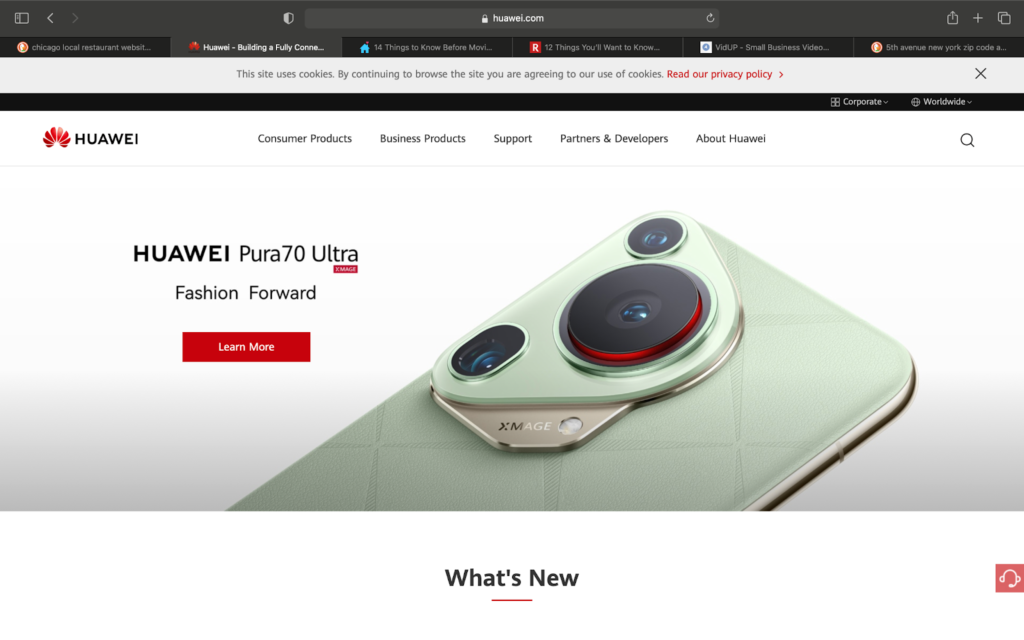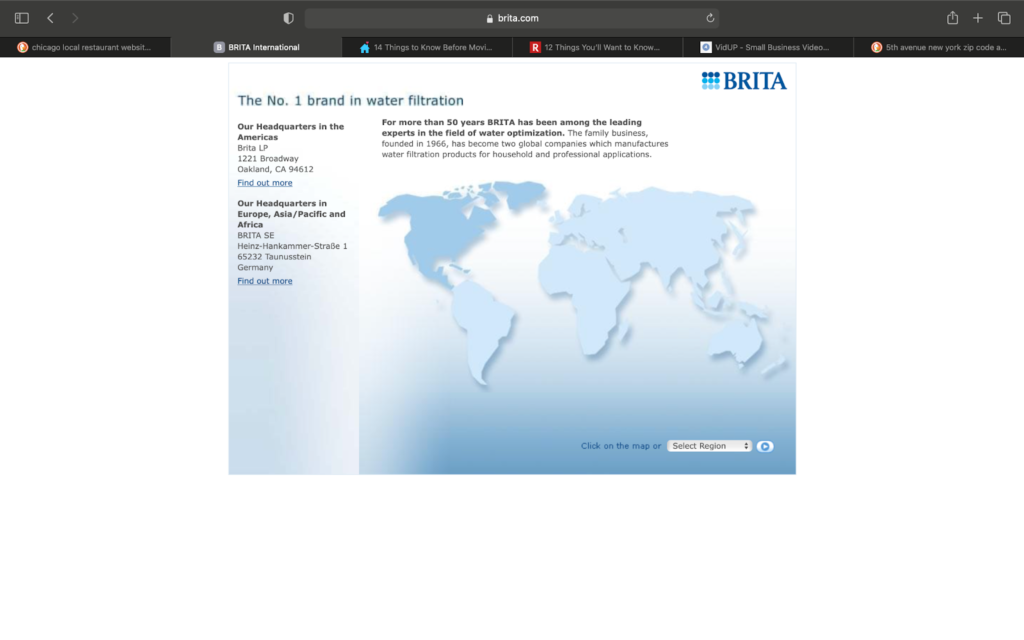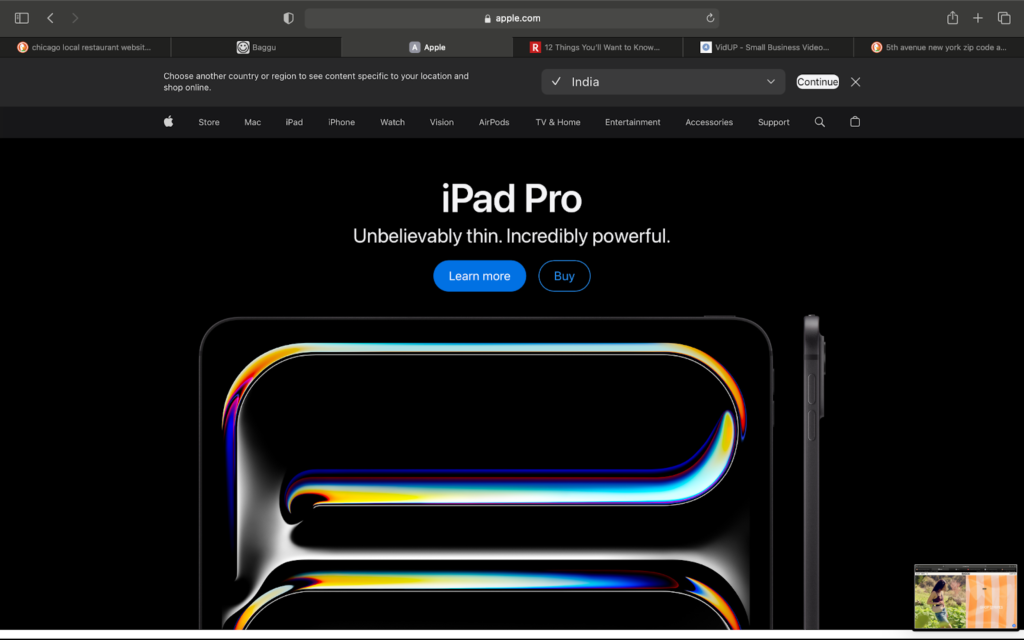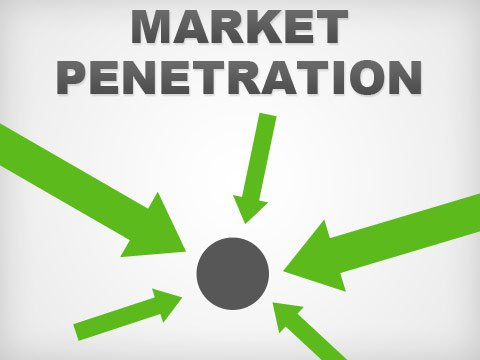Has your company struggled to sell a great product? Do you need help selling a product that is better than your competitors? If so, the answer to your challenges lies in understanding the phenomenon of go-to-market strategy!
A go-to-market strategy flips the adage “if you build it, they will come” on its head.
It begins with “go where the customers are” or “make a product the customers want” and then bases the product strategy around it.
Imagine if a company built a sales strategy without completing a simple market survey or created core features of a product without first understanding the needs of its intended users – such a venture would almost certainly be doomed to fail from the start.
A Go-To-Market strategy allows you to avoid these pitfalls.
Let’s examine what a go-to-market strategy involves and how you can develop one for your product or company…
What is a Go-To-Market Strategy?
A go-to-market strategy is a comprehensive and extensive plan that brings a new product or service to market. Typically, every GTM strategy involves
- Understanding target markets and audiences,
- Creating structured marketing and sales plans,
- Anticipating distribution channels,
- Exploring available customer acquisition models,
- Extensively studying the competitive landscape to create a competitive advantage.
A GTM strategy envisions and traces all the steps required to successfully launch a product – from production to distribution to marketing to sales. It aims to solve a problem for a given audience by positioning its product as the market solution for said problem.
All players in the contemporary market must develop GTM strategies – from new companies with new products to old companies looking to diversify and expand their markets. A GTM strategy views the lifecycle of a product as being initiated by the needs of the customers and ending with the sale of the product that solves such needs.
Thus, a GTM strategy aims to engage its customers and/or prospective users via various channels and at different stages in their buying journeys to gain a competitive advantage for its current and future products and services.
Further, a GTM strategy usually revolves around specific Key Performance Indicators and SMART goals that help its executors stay within established boundaries of product management and sales.
Case Study #1 – Slack
In its first iteration, Slack failed miserably and had to start all over again. However, they knew they had an ace up their sleeve. They had successfully identified a pain point of their users – the need to minimize clutter in internal communication.
Soon, they rebranded their SaaS business with the tagline “minimize the cost of internal communication for your business.” This helped them grow from a business with a $0 valuation to $4 billion in less than four years. Such is the power of a GTM strategy.

What is the Purpose of a Go-To-Market Strategy?
Any GTM strategy is devised to avoid market failure. The idea is to study the market and eliminate the worst-case scenarios before they play out. GTM strategies are particularly important in a market environment driven by constant innovation and development of existing products.
This is especially true of the Service-as-Product and Service-as-a-Software (SaaS) sectors – products and services that aren’t based on extensive market research or around user behavior will almost inevitably lead to market failure. Such projects will have to be restarted entirely, as was the case with Slack.
Let us take a look at some of the more precise purposes of GTM strategies…
1. Understanding the Marketplace
Not understanding the market in which your business operates is an easy way to fail. This is one of the things that a GTM strategy will help you avoid.
Surveying and analyzing the market space in which your business operates is one of the most important purposes of any GTM strategy. The strategy follows a set framework.
- Understand the problems your intended users face,
- Identify the solutions that the market currently offers,
- Think of product ideas to bridge the existing gaps within the market.
Such an approach is not limited to merely identifying the problems that the customers face but also how the solutions reach them. It, therefore, involves an analysis of the distribution channels used to deliver existing solutions to the users.

Cast Study #2 – Microsoft Surface
Everybody considers Apple iPads and Microsoft Surface tablets to be competitor products. However, if you ask Microsoft marketers, they will tell you that this is not necessarily the case. They’ll tell you the opposite is true!
Both products serve different purposes. Microsoft provides machines for business purposes, including accessibility and smooth collaboration. Apple, on the other hand, prioritizes user intuition, thus personalizing rather than standardizing experiences. Two different approaches, based on two different markets.

2. Positioning the Product
The solution that your product offers should flow from the problems faced by current users. Market analysis provides impetus for sound product development and insight into how you can best position your product as a unique value proposition that will solve consumer problems, often better than your competitors.
Thus, product positioning via a GTM strategy helps capitalize on what others in your sector are not providing. By telling you what the competition is doing to solve the problem you are targeting, it helps you create, strengthen, and preserve a competitive advantage.
Creating a competitive advantage is essential for:
- Short-term brand awareness,
- Market credibility and
- Long-term sustainability of any business.
Case Study #3 – Vidup
Vidup is an app that provides business video services for small businesses—not that unique, right? Their niche, however, lies in where they have positioned themselves. They cater to markets in India, Thailand, and Egypt. In these countries, users faced problems with buffering speeds due to the lack of uniform broadcasting infrastructure.
Vidup targeted this market and positioned itself as a brand that would eliminate buffering by limiting the number of titles it carries. It even tailors the titles it carries to the demand trends of its market. It now boasts over 40 million users across 30 cities!

3. Mitigating Risk
All product and service launches entail high degrees of risk. An estimated 80% of products and services fail after their launches. This means that even if you have a strong product built on the back of good core features, it may well fail.
A GTM mitigates this risk. A good GTM will tell you what failure looks like and define the parameters of success. When the process beginning with production and ending in sales via marketing and distribution is posited, the only possibility of disappointment lies in executing the process.
A GTM will thus narrow down the avenues where you can fail, creating the most chances of success.
4. Defining Logistics

A good product does not mean a concurrent chance at a successful launch. Rather, the idea is to anticipate what can go wrong post-production, after or during the product’s introduction to the market.
Crucially, this involves how awareness about the product and the product itself reaches the market and, ultimately, its intended users. A GTM strategy requires clarification of such operations that involve synergistic utilization of distribution, marketing, and sales models. Through a GTM, these core operations are streamlined to provide maximum chances of success.
Case Study #4 – Bread Beauty Supply
Bread Beauty Supply is a brand that deals in makeup products and is owned by black women. It tackled two issues: accessibility to healthy and well-researched products that cater to the skin of black women and the easy availability of the products in the market it wanted to enter.
It announced that it would distribute its products via Sephora stories, and voila, its sales, brand awareness, and reach exceeded all expectations!

A GTM strategy does not merely follow a product or its core strengths. Rather, it defines the process through which you and your business can best define the strengths of your product or service. Additionally, it forces businesses to develop frameworks within which they pursue the development and innovation of existing or prospective products as market solutions for user problems.
Who Needs a Go-To-Market Strategy?
A business strategy does not and must not comprise or be built around buzzwords. Its contents must fit your business objectives hand-in-glove. If the purposes outlined above are not enough to convince you that your business needs to adopt a GTM Strategy, check to see if your business fits any of the descriptions below
1. Startups
Market failure is costlier when your business is just entering the sector or the industry. Indeed, it can mean the difference between survival and premature enclosure.
Therefore, developing a GTM is a must for new businesses, which will ideally start with either a limited product profile or a specific product.
Several strategies focus on specific business processes that aim to play to the strengths of your prospective business — say, an innovative product or a shrewd sales strategy that leverages an emerging technology.
A GTM strategy provides a holistic alternative that allows your business to consider existing market realities, within which it will eventually be accommodated by existing customers and competitors.
The success of harmonizing an existing product with an emerging technology does not depend merely on the smooth integration of these two processes. It depends also on the ripple effect it might have on other business processes – GTM will point these out to your business.
2. Conquering New Markets
Several businesses look to incorporate older products into new markets with existing strategies. This may lead to a problem-solution mismatch. Often, the solutions that you think your product offers may not match the problem that it can solve in a new market.
Uber entering the Indian market is a classic example of such a move. The introduction of two-wheeler or moped taxi services is a manifestation of a GTM strategy at work. Instead of imposing a fixed idea of what a product should look like on the Indian customer, its solution was to incorporate an existing solution into its business practices.
Thus, a GTM strategy offers a good chance of avoiding the problem-solution mismatch for a business looking to break into a new market.
Case Study #5 – Socrata
As a SaaS business, Socrata provided innovative ways of visualizing data. While several individuals used the website, surveys showed that governmental organizations also used it in large numbers.
Thus, it tapped into this market more aggressively and redefined its GTM strategy, positioning itself to better advertise to governmental agencies and their representatives. It emphasized its cloud-based solutions for data aggregation and was soon acquired by Tyler Technologies.

3. Diversifying Existing Businesses
Conversely, you may be an old and established business brand looking to diversify. After all, unless you consolidate your gains by constantly moving, your business will start decaying. A GTM strategy can help with this by bridging the gap between you and your users through horizontal or vertical integration.
Case Study #6 – Amazon
Amazon is a classic example of this. First, it expanded from selling books to cataloging all FMCGs available on the Internet. However, it did not stop there. It went further into the business of providing Web Services and Cloud Computing Solutions. Thus, it not only streamlined the businesses that were already online, but it actively brought businesses that were offline into the online domain.

This proves that a good GTM strategy studies not only the consumer but the entire supply chain. It identifies and solves problems that cannot be grasped by just a demand-side analysis of the supply chain.
All businesses, new or old, looking to break into new markets or diversify into horizontal or vertical segments can use a GTM strategy to create or strengthen their competitive advantage.
What are the Benefits of a Go-To-Market Strategy?
A GTM strategy seeks to offer a holistic and comprehensive approach to launching new and existing products in new and existing markets. It aims to enable your company to carve out a competitive advantage that you can rely on.
Competitive advantage implies that the benefits flowing from a GTM strategy may differ depending on the sector, the company, and the product. Here are some of the benefits you can expect to reap from a GTM strategy.
1. Increased Launch Success
Product launches represent either the success or failure of the cumulative business process that goes into making the product available to the public. This is seldom the case. Often, the product is great—the surrounding business processes, however, fail to live up to the product’s standard.
A GTM strategy solves this problem. By considering everything, not just the quality of the product or service you are looking to launch, a GTM strategy helps you avoid potential pitfalls around the launch rather than the product.
This means the GTM strategy will force you to consider whether you have adopted synergistic distribution, marketing, and sales platforms — processes that drive the product into the hands of the end users.
Considering the two aspects – the product and the launch – as separate yet equally important in determining the success of the product launch will allow you to avoid a scenario where you bank on the inherent superiority of your product compared to others in your industry.

2. Maximize the Return on Investment
In an alternative scenario, you may consider all aspects surrounding the launch of your product – from the solutions it promises to provide to how it will get to the hands of its users:
- First, you consider the product strategy – how to optimally enter and complete the production phase of the product cycle.
- Next, you analyze the distribution channels. You then win the trust of your distributors by showcasing the quality of your products to them.
- Ultimately, you focus on the sales strategy and marketing – how to further communicate the existence of your innovative market solution to a common consumer problem.
Instead of strategizing one step after another, a GTM strategy synergizes this process. It accounts for the aspects common to these processes and allows you to envision how they can work simultaneously. A GTM strategy makes this clunky process smoother and reduces the cost it takes to run these exercises separately. It drains fewer resources and provides better returns on the same investments you would have made for each individual process.
Case Study #7 – Huawei
After Huawei was banned from doing business in most Western markets due to geopolitical exigencies, it had to redefine its market. It faced similar challenges in India but needed to capture the market to keep growing.
Instead of adopting conventional marketing strategies, it started hiring more people in India for its R&D bases that it also opened locally. Thus, it was able to brand itself as a “Make in India” brand. It now has a large market share and has been able to overcome its reputation as making cheap devices.

3. Stay within Budget
Sometimes, your business or startup may receive huge funding or seed capital from VCs. This means an opportunity to develop all aspects of your business, including the product and the surrounding processes, that are crucial in driving long-term success.
Conversely, this may prove to be a double-edged sword. The availability of vast sums of operating budgets can also prove to be the reason for a drain on your business’ resources. Here, a GTM strategy is very useful. A streamlined approach that accounts for the competition and its operations will also allow your business to learn from its mistakes.
Additionally, when your GTM strategy focuses on meeting or staying under the estimated customer acquisition costs, you will automatically have an edge when it comes to staying under the overall budget you have projected. Sometimes, a GTM strategy will even help you lay out the costs of operations in the first place. You can further iterate your GTM strategy with the aim of synergizing processes that are spread across departments but target the same outcomes.
4. Sustainable Business Growth
Startups sometimes die before they can take off or show their full competitive advantage. Conversely, they may create a burst of early demand but cannot sustain it due to a lack of timely funding or production snags.
A business may need to alternate or plan its way between managing funds to stay within budget or creating short-term brand awareness by burning cash for survival. A GTM strategy can help you pinpoint when to make each move by,
- Studying the competitive landscape,
- Understanding the nature of distribution channels available to it,
- Conceptualizing marketing strategies in advance of product development,
A GTM will tell you when to lay back and innovate in the face of weak demand and when to accelerate production to capitalize on short periods of enhanced brand awareness. Thus, whatever your business objectives are, a GTM framework will increase your chances of meeting them successfully.
A GTM strategy will help your business reap maximum benefits from whatever crop you are sowing. It not only determines which crop to sow when but can tell you how to sow it, when to harvest it, and when to resow the next batch such that you can maximize the output in the next season of growth.

How to Build a Go-To-Market Strategy Framework?
Having understood the purpose and benefits of a GTM strategy, along with when to deploy one, the next step is to understand how to build a go-to-market strategy. Such a strategy is not self-evident, nor is it the same for every business.
1. Understand the Market
The first step in any GTM strategy is to go where the customer is rather than bringing the customer to you. We must understand the importance of this step. Several businesses and services are such that will create value for the users that they may not know they need in their lives. Therefore, analyzing consumer behavior is key for any GTM strategy. Every GTM strategy must
- Visualize user journey
- What creates the problem you are solving for the users?
- When and how are they solving the problem right now?
- Is there a common platform that brings together all the users?
- If not, can you create a platform to reach all users and potential users and observe their behavior?
- Conduct Market Surveys – It is imperative to know in advance how the users may react to your products.
- What does the current trend of user behavior tell you about their potential reaction to your product or service?
- What threshold value would they be willing to trade to access your product?
- Create User Profiles
- What are the different personas of users that may use your product?
- Can you create differential offerings to tap into all the market segments?
- Or should you focus on only one part of the market, saturate it and then expand to other segments?
- Focus on the pain points
- Which potential is directly facing the problem you are trying to solve?
- For instance, it might be employees in a firm you are targeting, not the entire firm.
- However, is it the employee who has the discretionary power to avail of your services and pay for them?
- Or is it an executive decision you will need a business to make on behalf of its employees?
Case Study #8 – Taxjar
Taxjar provides simple and innovative ways to understand how and what tax to pay to the Revenue Department. It surveyed the market and realized that most of the existing services offered opaque and vexing ways of understanding taxation.
It focused on breaking down the information into consumable information, thereby leveling the taxing landscape. After first making the users understand the topic of taxation, it converted those users into leads and then into customers. Shortly thereafter, it was acquired by Stripe in 2021.

2. Analyze the Competitive Landscape
After understanding the market and identifying the pain points of your potential users, the next step is to understand how these pain points are currently being served. For this, ask the following questions:
- What businesses or products already serve the needs of your customers?
- If so, how are they reaching the users?
- Is the market fragmented among different companies with sparse distribution?
- How are the users distributed among the competition?
- What distribution, marketing, and sales channels are the current competitors deploying?
- How uniform is the competition’s approach to the market?

All such questions are extremely important in determining market and product positioning. For instance, say there is a uniformity in the competition’s approach to customer acquisition and a common direction in which they are developing the product. In this case, if your business can carve out a competitive advantage, it is likely to disrupt the market positively. This could become an excellent value proposition for your company.
3. Build a Value Proposition
Now that you are armed with information about user behavior, pain points, buyer journeys, and the competitive landscape, only one thing remains – creating a solid value proposition. The value proposition will depend on how well you have traced the other steps that go into creating a GTM strategy. Thus, good preparation is a prerequisite for creating a solid value proposition:
- From the user profiles you have created, which is the first you want to target?
- Within the pain points you have understood, which are the crucial ones you want to cater to?
- In the competitive landscape you have observed, how do you want to position your product?
- Of the user journey you have mapped out, how do you envision your business being a part of it?
All these questions will help you whittle down your value proposition to a precise salve that you can apply to the pain points of your users.
Case Study #9 – Brita
Brita offers water filtration solutions to individuals and commercial clients. However, instead of focusing on integrating itself into the general market on electronics and kitchen appliances, it positioned itself as a Water Brand, selling hydrological solutions.
Building on this distinction, it positioned itself, both physically and in the minds of the people, away from the appliances aisle. Thus, it was able to create a truly unique value proposition based on a GTM Strategy.

4. Choose Distribution, Sales, and Marketing Strategies
Armed with a value proposition, you must now choose how to deliver it to the customers. Some important points to remember while choosing these strategies are
- The moment of offer should be a tipping point for the customer in their journey to use your product.
- The value proposition must offer itself to the users in their time of pain.
- The proposition should appear at the same time the users are facing the problem.
Thus, the product should be positioned optimally from the perspective of distribution, sales, and marketing strategies. The three strategies must operate in synergy. Often, the distribution channel can be deployed simultaneously with the marketing and sales channels. This is doubly true for Software-as-Product and Software-as-a-Service propositions.
Case Study #10 – Slack 2.0
Slack advertising itself around clunky email exchanges to offer a less cluttered and clearer approach to internal communication is the perfect example of this strategy. Where your potential users face the biggest obstacle, you leverage your advantage – they are one click away from comprehensively reforming their communication strategies. Your marketing, distribution, and sales strategies are thus all deployed together.

5. Price the Product
At this point, you know who your users are, how the competition understands your industry, what value proposition you want to generate, and how you are going to deliver value to your users. The last crucial aspect of your go-to-market strategy is to determine a price point that you think will optimize your reach.
Sometimes, a free product is considered less valuable. Alternatively, you want your users to play around with the product or service to realize the solutions it offers. Ensure that your proposition is neither undervalued nor overlooked.
Uber is a classic example of a GTM price point—operate in a way you think is feasible for your users. Uber famously did not break even for more than a decade of its operations. It patiently waited to change its users’ behavior until the tipping point arrived, and it could start generating revenue and turning a profit.
When thinking about how to build a go-to-market strategy, focus on key and actionable learnings. It keeps in mind key performance indicators and creates these based on the existing market landscape and the stance of the competition. It also accounts for the nature of distribution and sales channels available to it.
Five Go-To’s for a Good Go-To-Market Strategy
Having understood the what, why, how, and who of creating go-to-market strategies, let us now look at some simple tips that can drive a good go-to-market strategy:
1. Understand Product Lifecycle
To retain customers, it is not enough to just sell your product or service. It is equally important that your business retains its users. For this, you must know when your product or service will reach the end of its shelf life or lifecycle.
The end of the cycle for services revolves around a subscription to the service. This may depend on the user staying within the usage area. That is, a user may exit a firm, but that does not mean they won’t join another. So, if you are providing communication services like Slack or employment connectivity like LinkedIn, turnover is not a problem.
But for products, the lifecycle is very important. It can influence
- Demand trends,
- Production cycles,
- Procurement orders,
- Labor-hiring decisions and
- In periods of scarcity of raw materials, it might also impact the price point.
Your production cycle can even have a knock-on effect on support services and raw material industries on which you depend. Therefore, estimating the product life cycle is important for a go-to-market strategy. It can tell you the following:
- When to market aggressively,
- When to project a lean period,
- How to finance a downturn,
- When to anticipate a new production cycle,
- How and when to optimally procure raw materials.
Case Study #11 – Baggu
Baggu offers reusable bags in vibrant colors and intricate designs. By understanding the lifecycle of non-reusable bags, it flipped the market on its head. It tapped into the growing consumer anxiety and demand for environment-friendly products.
From there, it positioned itself as a green brand that provides eco-friendly solutions to the common problem of personal carry items. It further partnered with artists such as Junebug to increase its visibility and awareness!

2. Mobilize the Existing User Base
You don’t have to be an established brand with a huge existing customer base to reap its benefits. In the age of globalized data collection, access to users is democratized. The level playing field offers all businesses the opportunity to pitch their value proposition to users.
The marketing budget and distribution channels can indeed narrow the path to customer acquisition. However, the channels are open to everyone, so acquisition is only a function of how the marketing channels are deployed.
A strong value proposition, when offered to a base of users already utilizing similar services, will likely generate several leads for your business – especially in the first phase of your business.
For established businesses, mobilizing the user base is easier. Users will likely trust the new solutions you are offering based on the trust you have built with them over time and with similar robust solutions for different problems. Translating the value of this trust into sales is relatively easier and cost-effective while testing new propositions.

3. Estimate an Acquisition Cost (and Stick to it)
It is also true that tapping into an existing user base can still prove expensive. Even more so for new businesses. To avoid this problem, estimate the acquisition cost for your customers when you create a value proposition. Take into account the following factors:
- Where do most of my users reside?
- Can I take advantage of a clustering of the users?
- Can I divide my customers into actionable segments?
- Which segment can provide the most value for acquisition initially?
- Can I create virtual or physical spaces to bring the users together to create a sense of user community for my products?
Answers to these questions will help you determine different user segments and the costs and benefits attached to each segment. From there, you can prioritize segments by matching them to your budget, growth strategy, product cost, and production cycles.
Going over the acquisition cost will also be a signal to you that you need to be dynamic in dealing with production snafus, lack of demand, marketing problems, or distribution chokepoints. It will be a good signal to which you can choose to react as required.
4. Create a Product Matrix
To determine the product life, production cycle, user acquisition cost, and marketing strategies, a product matrix can be very useful. A product matrix can be constructed variously. You can:
- Compare the pain points users feel against the solutions your product offers,
- Ascertain whether the users will be in charge of procuring the product (especially for B2B and SaaS solutions),
- Conduct a SWOT analysis of the product and compare it with the competitors’ products,
- Generate estimated timelines for the use of your products – including frequency (2 tablets a day) or absolute time units per day (app used for 3 hours a day).
The product matrix will tell you the following:
- Whether the users are deriving value out of the product,
- Whether they are directly in charge of procuring it,
- If the product is capable of disrupting the competition,
- Whether the users derive the same value you estimated from your product.
Thus, a product matrix will help you verify whether and to what extent the estimates and assumptions about your product are correct. It will also allow you to be dynamic with your strategies and bring about change where necessary.
Further, such changes can be anywhere along the product’s supply chain—this is the beauty of a go-to-market strategy: Do anything and everything it takes to reach the market efficiently. A good product matrix can also become a part of your business’s go-to-market strategy template!
5. Aggregate Learnings
Any good go-to-market strategy aggregates the learnings of previous strategies. While this is easier said than done, it is also very important. Sometimes, solutions to internal supply chain problems come from outside – from the demand side.
For instance, if your product matrix tells you that the product is historically out of use for three months out of twelve, the problem is not with the supply chain but with the demand curve. Here, the supply logic will have to give way to the demand trend. A different product must be created for those three months.
Moreover, sometimes cross-industry solutions need to be grafted onto our businesses to save them from themselves. If more than 80% of the companies are failing with their product launches, successful product launches may be centered on particular segments. The highest concentration of such segments will tell you which strategies to use and how.
Case Study #12 – Apple
Apple is an excellent example of a business that reaps the benefits of aggregating GTM learnings. Its core remains the same – products that deliver and prioritize personalization. However, its model has changed over time.
It has delivered innovation in distribution by opening proprietary stores that sell its products and offer a unique purchasing experience. It has further diversified into the SaaS business with Apple Pay and Apple Music. Its service offerings are now as strong as its innovative products!

The next billionaire won’t create Facebook – but that doesn’t mean that they won’t learn from its strategies of acquiring new users. Remember, merging quality solutions with market trends is the hallmark of a good go-to-market strategy. With these tips, you too can build a GTM strategy you can take to the bank!
The Way to the Market
A go-to-market strategy prioritizes listening to customers and observing the competition rather than telling them what to buy. This allows you to understand market and user behavior and develop a strategy that will conspicuously place your product or service within the users’ reach.
In the contemporary market, consumers speak with their choices and signal their preferences by emphasizing what is lacking in existing products.
A GTM strategy is imperative for survival in such a landscape. We at LeanSummits can tailor a go-to-market strategy for your product and effectively channel it into the hands of your users.
So, the next time you’re preparing to go to the market with your business, will you be armed with a Go-To-Market Strategy to match it?



